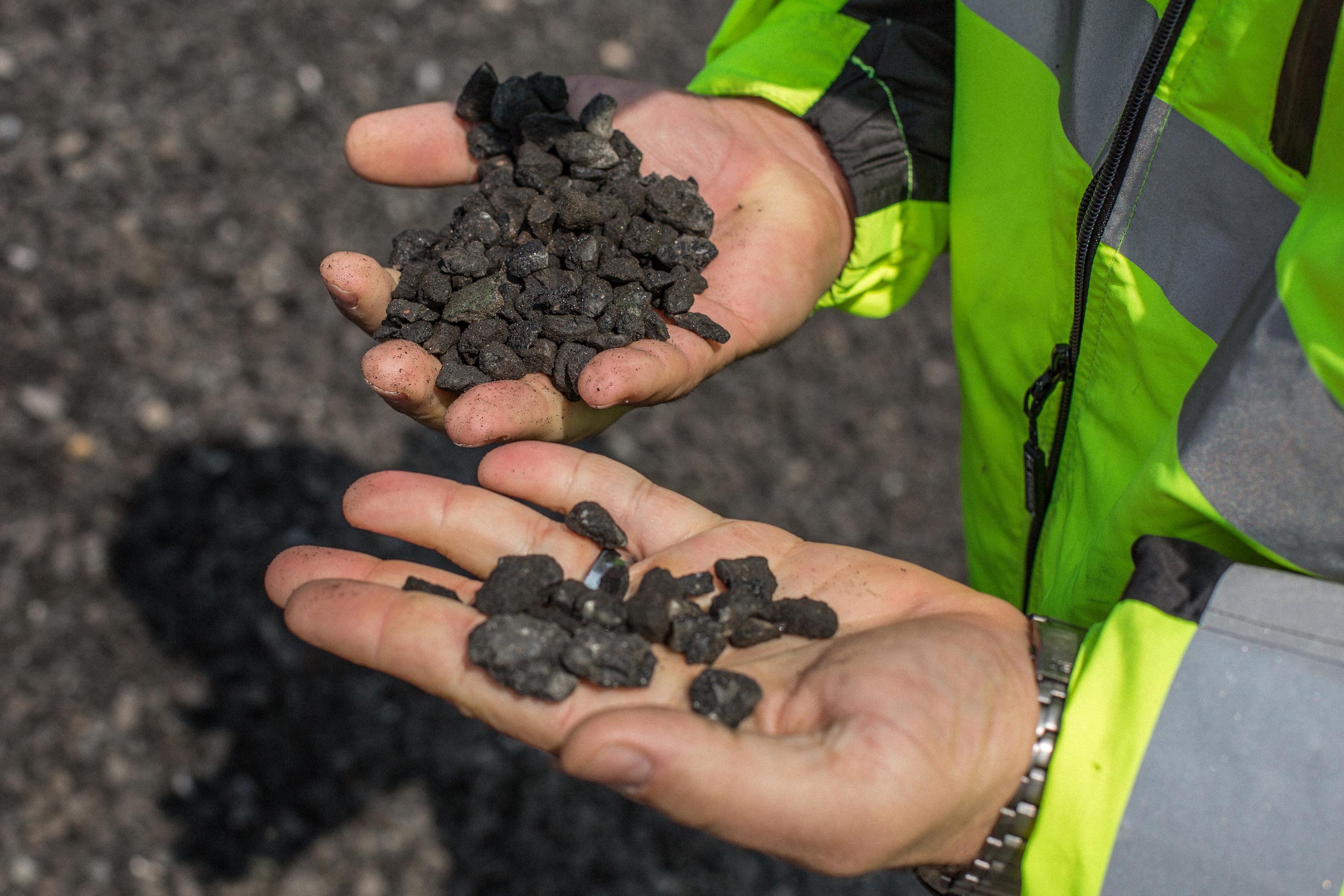
 Department of Design and Construction311
Department of Design and Construction311 Search all NYC.gov websites
Search all NYC.gov websites

Greening the Streets of New York
How Recycled Asphalt Pavement Saves Energy
What is green, can’t catch on fire, but can sustain heavy loads of traffic without breaking apart?
The answer is asphalt pavement – the most recycled material in the United States. Asphalt pavement is a mixture of stone, gravel, or sand and viscous liquid tar. All of those things, if extracted from worn-down New York City streets, are sustainable. Thanks to the City’s roadway resurfacing program, asphalt pavement used on these streets can be recycled into new asphalt and repurposed for locations throughout the five boroughs.
Recycled asphalt is another method DDC employs to meet Mayor de Blasio’s goals for a more sustainable City, reducing landfill use and helping to meet the City’s target of reducing greenhouse gas emissions by 80 percent by the year 2050. With thousands of miles of streets in the five boroughs, there’s great potential for this to have a substantial effect on the environment while reducing infrastructure costs.
We use asphalt pavement to resurface New York City’s 6,000 miles of roadway for the Department of Transportation. We first mill the streets using razor-sharp claws that dig up the surface layer of the asphalt. That layer is then filtered, ground to a specific gradation, and mixed with a glue-like rejuvenating agent – perfect for making the new mix stick together in the streets.
Why is recycling asphalt pavement more energy-efficient than producing new material?
-
No excavation required from quarries or refineries for new rock
-
No trucking needed to transport materials from outside the city
-
Old asphalt from city streets isn’t traveling to landfills at the end of its lifecycle
-
No petroleum is used to make recycled asphalt
-
Less heat is needed to mix recycled asphalt
Right now, the City uses a minimum of 30% recycled asphalt pavement (RAP) to create new asphalt according to Local Law 71. DDC, together with Green Asphalt, wants to make that 100%. Green Asphalt, based in Long Island City, is one of the only hot mix asphalt plants in the country that produces 100% RAP, and is the only asphalt plant that does so in New York City.




To produce sustainable asphalt pavement, chunks of old asphalt is milled from the city streets and transported to a local asphalt plant. After the material is ground into the appropriate gradation – think smooth, fine particles or larger, rocky pieces – then it’s mixed in heat with a rejuvenating agent, softening the mix into a glue-like consistency so that the newly recycled asphalt sticks together.
Along with Green Asphalt, DDC design engineers are leading the way in the field of recycled asphalt pavement. Dino Ng, Associate Commissioner of Infrastructure, and Richard Jones, Director of Design Services, are producing a performance-based specification for 100% RAP. This material is tested to withstand rutting and cracking in extreme temperatures and can be recycled many times. “We call it black gold,” says Ng. “All the money in asphalt is in rocks, bitumen, and liquid asphalt – or petroleum, which is the most expensive part of the mixture. Our material is completely green, cost effective, and locally sourced.”
“The whole process of making asphalt pavement – the excavating, trucking, crushing, refining – all of this makes a lot of CO and CO2 gases,” says Nima Roohi Sefidmazgi, Ph.D., the quality control manager at Green Asphalt. “Thirty percent is good, but we can do better. By making 100% recycled asphalt, we are saving lots of units of pollution.” Sefidmazgi, Ng and Jones are developing this new mix of RAP to become a standard option for the public sector to use in all of its roadway projects.
“We have an unlimited source of material in the city streets,” says Sefidmazgi, “Which means we have so much RAP and we need to use it. The best part is you’re not damaging the environment; you’re not putting excess material in the landfill.” The asphalt industry recycles nearly 100 million tons of its own product each year, saving the American taxpayer $1.8 billion. Using RAP could save the City of New York nearly $5M in annual asphalt costs.


